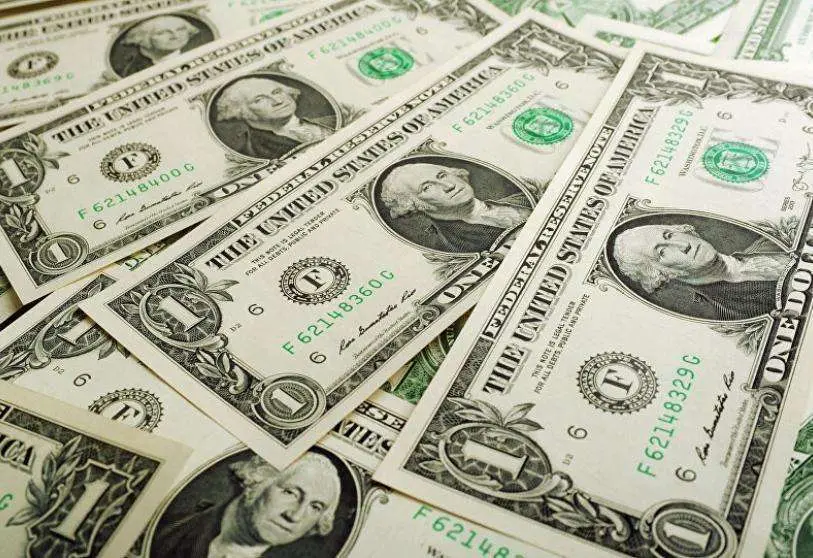The struggle against the dollar for global monetary hegemony

The announcement by Mikheev - the head of the state arms export consortium - that Russia and India have agreed to stop using the US dollar in their mutual transactions not only shields Russia's supply of S-400 missiles to India from potential sanctions, but presumably signals the first in a series of skirmishes in a currency war for control of international financial flows, in which China, and to a lesser extent the European Central Bank, are also taking positions and which seems inevitable.
These moves should not come as a surprise to anyone, given that the US dollar, more than a currency, is the vehicle around which US global commercial, security and cultural affairs revolve, to the extent that there has been a direct cardinality between America's global financial and military leadership over the last 100 years, but especially since the time of Richard Nixon's presidency.
In order to understand this better, and at the same time to understand the incentives of emerging powers to disrupt this monetary hegemony, it is necessary to review the chronology that has led to the US dollar's dominant role in the world economy, going back to the Bretton Woods system of fixed exchange rates agreed by the Allies shortly before the end of World War II, whereby most Western and assimilated economies pegged their exchange rates to the value of the US dollar, whose value was backed by its parity with US gold reserves, thus ending the Gold Standard, which had been in place since the 19th century, more or less as conceived by David Hume in 1752.
The Bretton Woods system was a transitional formula to allow a certain degree of financial openness at the global level, bringing greater accessibility and exchange rate certainty to the foreign exchange market, which was dominated by the large international banks. However, in the early 1970s, the system showed its limitations as the economic expansion of incipient globalisation demanded more dollars than the US gold reserves could support.
Against this background, the Smithsonian Agreement was put in place, under the umbrella of the OECD, creating a system in which currencies could operate freely floating within a tolerance margin of 2%, both up and down. In other words, the widespread adoption of fiat money took place, i.e. backed by faith in the stability and strength of the issuing bank's country's economy.
Being for decades by far the only one with the depth and liquidity of its capital markets, underpinned by the strength of its political institutions and economic weight, the US dollar became the safe haven currency for all intents and purposes, resulting in the enormous US ability to finance itself through the placement of sovereign bonds - or in other words, to borrow in a currency whose issuance and exchange rate it controls: the US finances its astronomical deficit with the US dollar and the US dollar with the US dollar, and the US dollar with the US dollar. The US finances its astronomical deficit thanks to the demand for dollars by other countries, in which third countries deposit part of their foreign investment and central banks their foreign exchange reserves. No other nation has this capacity, which allows the US to use financial sanctions (e.g. seizure of dollar-denominated financial assets) against other states asymmetrically, i.e. without the slightest possibility of the affected country responding reciprocally to the punitive measures inflicted on it. Similarly, the US has at its disposal tools such as the Treasury Department's Foreign Assets Control Act to impose sanctions on individuals and companies that are not under US jurisdiction, which at the very least calls into question questions of legitimacy, sovereignty and legal certainty.
These sanctions have a reach that goes beyond the mere direct harm caused to the sanctioned party, as their effect extends indirectly as a result of the reluctance of third parties to do business with sanctioned entities and countries for fear of being sanctioned or hindered in their dealings with US financial entities, making the US dollar a powerful instrument of international economic coercion.
It is not surprising then that the emerging powers of the new order in the making struggle to mitigate the US ability to use its monetary muscle as an instrument of foreign policy.
After all, the dominance of the US dollar as a reserve currency is ultimately more a symptom than a cause, because if third country central banks held fewer US dollar assets, differences in the US dollar exchange rate or interest rates would be marginal. Yet the share of national reserves in US dollars and their preponderance in foreign exchange trade has shown little sign of eroding, despite the emergence of the euro and the substantial growth of China in this century, even despite the exorbitant US current account and fiscal deficits mentioned above, so that the coercive power of the US currency remains intact.
Although attempts by the other economic powers to rid themselves of this sword of Damocles have produced modest results to date (e.g., the creation by France, Germany and the United States of a new US dollar), the US currency is still intact. the creation by France, Germany and the UK of INSTEX, an alternative to SWIFT, the American electronic banking transaction system; the launch by China of the Shanghai hydrocarbon futures market, the redenomination in euros of the intergovernmental contracts of EU partners, or the above-mentioned dollar-free trading agreement between Russia and India), the realities of the new global polycentric scenario make it inevitable that the relative weight of each of the emerging blocs will achieve strategic autonomy in the financial arena, so that a sustained increase in multilateral efforts to erode the hegemony of the US dollar, and with it, the monopoly of unarmed coercion, is to be expected.

